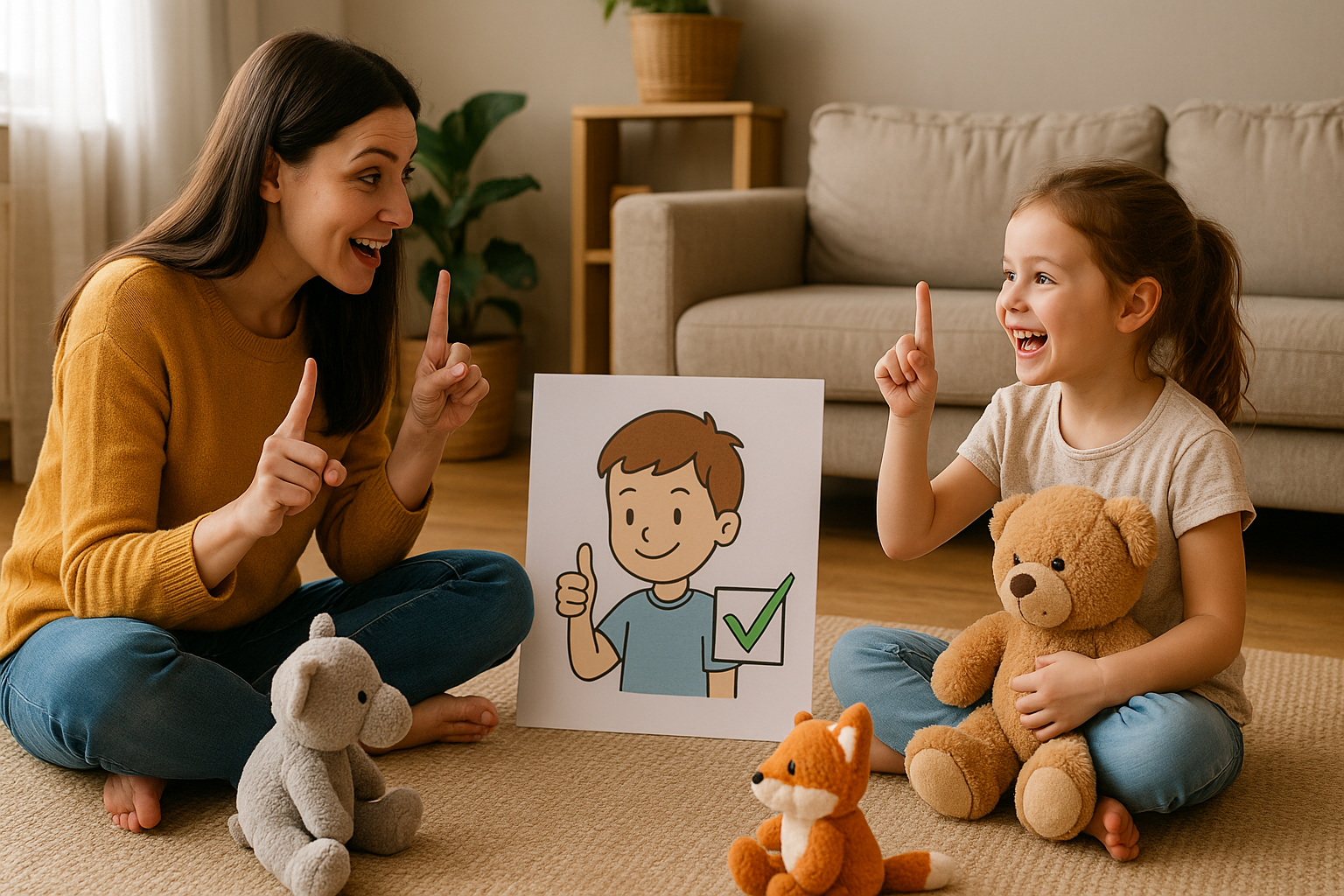Discipline doesn’t have to mean stern voices and time-outs. For young children, the best way to learn good habits and understand rules is through playful, loving guidance. When learning is fun, kids absorb lessons naturally—and they’re more likely to apply them in everyday life. In this article, we’ll explore how to teach positive behaviors, routines, and social rules at home using games, stories, and role-play.
Why Play Works for Teaching Behavior
Play is the native language of young children. It’s how they process emotions, understand their world, and develop social skills. When we use play to teach good habits and rules, we:
- Reduce resistance and power struggles
- Build emotional safety and trust
- Promote retention through repetition
- Encourage self-regulation in a positive way
Instead of simply saying “no,” we create a context where the right behavior makes sense and feels rewarding.
Establishing Basic Habits with Games
Let’s look at some key habits for early childhood and how to build them through playful routines.
1. Handwashing
Game idea: “Germ Detective”
- Pretend there are invisible germs (use glitter or paint to show how germs spread).
- Let your child “catch” them by spotting dirty hands.
- Make handwashing a superhero task—only clean hands can enter the kitchen!
2. Brushing Teeth
Game idea: “Cavity Monster Chase”
- Pretend cavities are tiny monsters hiding in the teeth.
- Let your child use the toothbrush to chase them away.
- Play a favorite brushing song or use a 2-minute sand timer.
3. Cleaning Up Toys
Game idea: “Toy Rescue Mission”
- Turn clean-up into a mission to return toys to their “homes.”
- Use baskets labeled with pictures to help organize.
- Celebrate with a cheer when the mission is complete!
Using Pretend Play to Teach Social Rules
Pretend play is perfect for introducing social situations and expected behaviors.
Play Ideas:
- Doctor’s office: Practice taking turns, waiting patiently.
- Restaurant: Practice using polite language like “please” and “thank you.”
- School: Role-play raising hands, listening to others.
Create scenarios where rules naturally come into play. Then step back and let your child lead.
Storytelling to Reinforce Values
Children love hearing stories, especially when they’re about characters like them. Use books and homemade stories to highlight:
- Kindness
- Honesty
- Respect
- Sharing
- Taking responsibility
Tips:
- Make up characters and let your child name them.
- Use simple problems and clear solutions.
- At the end, ask, “What would you have done?” or “Was that a good choice?”
Games That Teach Patience and Turn-Taking
Board Games and Card Games
Games like Candy Land, Uno, or Memory Match naturally teach:
- Waiting your turn
- Following rules
- Managing frustration when losing
Start with short games and model good sportsmanship.
Simple Turn-Based Games
Even activities like “Roll the Ball,” “Simon Says,” or “Red Light, Green Light” can build:
- Impulse control
- Listening skills
- Body awareness
These skills are the building blocks of respectful behavior.
Use Songs and Rhymes for Routines
Singing through tasks adds rhythm and fun. Try creating songs for:
- Putting on shoes
- Picking up toys
- Getting ready for bed
- Saying goodbye
Children respond to melody, and it makes transitions smoother.
Sample Song: (To the tune of “Twinkle, Twinkle”)
Brush your teeth and wash your face,
Put your things back in their place,
Time for bed and one more book,
Find your spot, your special nook.
Reward Positive Behavior with Praise and Play
Forget bribes and punishments. Instead, focus on:
- Immediate praise: “I saw how you helped clean up—great job!”
- Playtime rewards: “After we finish, we can do a puppet show.”
- Stickers or charts (for older preschoolers): Track progress visually.
The goal is to make the behavior its own reward—not the sticker.
Introduce Rules Through Visuals
Children understand rules better when they see them.
- Create rule posters with pictures and simple words.
- Use emotion charts (happy/sad faces) to connect feelings with behavior.
- Show photos of your child following rules and display them.
This builds ownership and pride in good behavior.
Create a Behavior Role-Play Box
Fill a box with:
- Puppets or stuffed animals
- Toy phones or kitchen sets
- Dress-up clothes
- Emotion flashcards
Use it to play out common social situations:
- Sharing toys
- Apologizing after a mistake
- Helping a friend
- Asking for help
Let your child play both the “helper” and “receiver” roles.
Stay Consistent but Flexible
While structure is key, don’t forget that young children are still learning.
- Repeat lessons often.
- Stay calm and supportive, even when rules are broken.
- Let them “replay” the moment the right way to reinforce the lesson.
The Power of Modeling
Children watch everything we do. Model the behaviors you want to see:
- Use kind words.
- Show respect, even in conflict.
- Keep your own routines consistent.
When you clean up, say “Now I’m putting my things away!” This reinforces the behavior visually and verbally.
Wrapping Up: Let Play Lead the Way
When children are invited to learn through games and stories, they develop healthy habits and understand boundaries in a way that sticks. Play creates a safe space where making mistakes is okay, and trying again is fun. So bring on the puppets, sing silly songs, and let your living room become the classroom of life.
